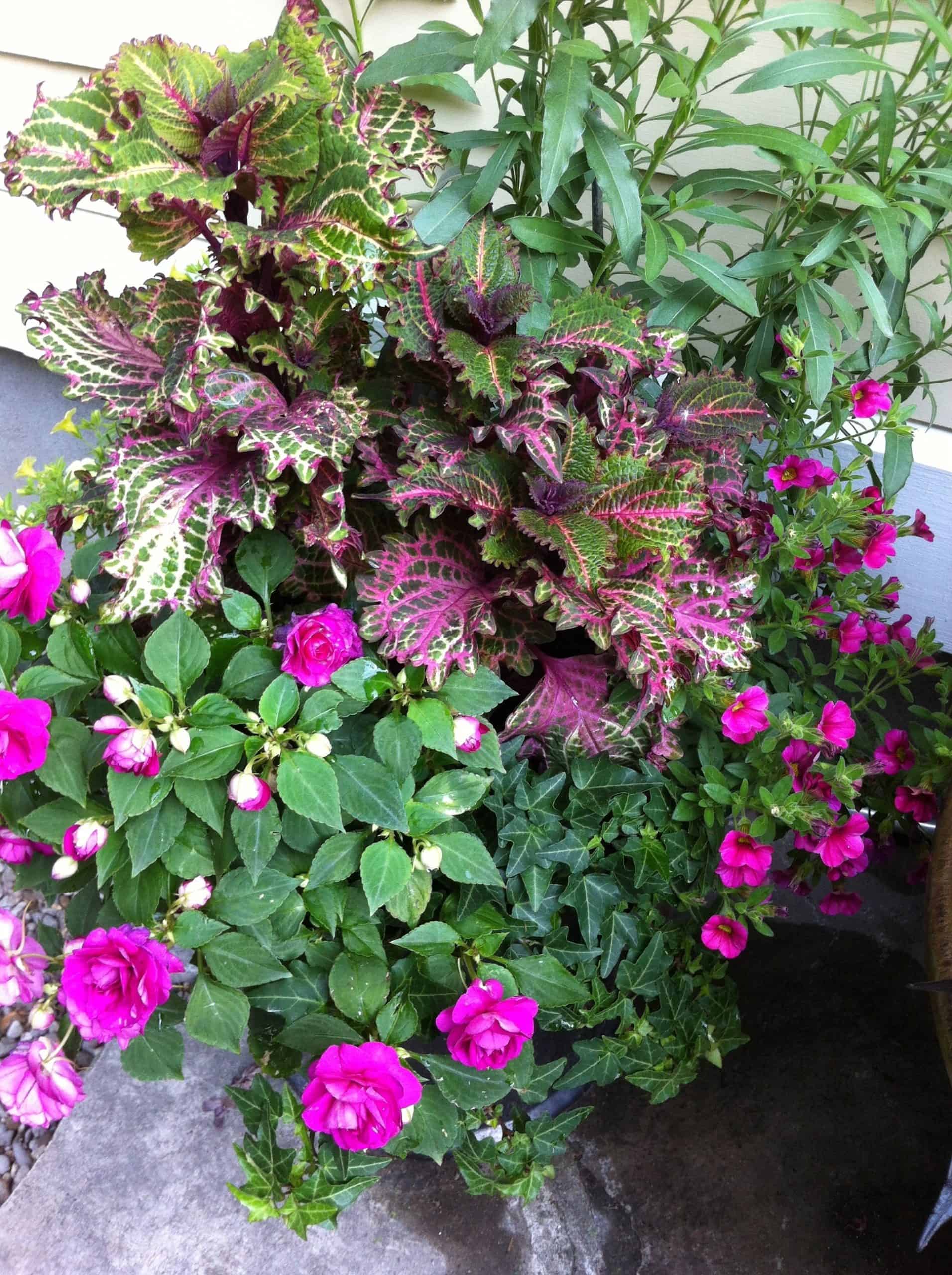Traditionally, the long May weekend has been the signal for gardeners to start planting, although for many parts of Canada, it’s still too iffy for heat-loving plants to go in the ground. There’s also no reason to cram your entire planting season into one weekend; it’s fine to plant throughout the growing season, up until fall, as long as you can keep new additions watered during hot spells. Pace yourself.
However, now is prime time to shop for vegetables and annuals, because May and June are when nurseries are well-stocked with these seasonal offerings. I won’t admit to how many trips I’ve made to local nurseries in the past two weeks. Choosing a few new container plants each year is a treat for me. I don’t profess to creating stellar designs; I just enjoy the small-scale “plant pictures” I make.
Once the car is unloaded, the plants rest in a sheltered spot until planting time. If I can’t get to them right away, I make sure to check them at least twice daily; small pots and cell packs can dry out quickly, especially on hot days.

Here are a few new-to-me annuals I’ll be experimenting with this year (not in the same container, though):
• Machu Morada Mexican petunia (Ruellia simplex Machu Morada), lilac blooms on tall plants; flowers best in full sun when it’s super hot
• Truffula Pink globe amaranth (Gomphrena pulchella Truffula Pink), neon-pink round tufts of flowers on spiky stems; full sun
• Coffee Cups elephant’s ears (Colocasia esculenta Coffee Cups), striking deep burgundy and green marbled leaves; likes moisture and partial sun
• White and pink Berried Treasure strawberries, mounding ornamental plants with the bonus of a few berries for breakfasts; sun
You’ll find plenty of container gardening tips and ideas on the Garden Making website; the Containers category can be found on the navigation bar at the top of the page. Here are a few timely posts:
• 4 quick-snip edible plants for containers
How to grow cilantro
Everyone has an opinion about cilantro. To me, it tastes like soap, but lots of people are big fans of the leafy green herb. Gardening 101: Cilantro gives growing tips, as well as how to save seed to grind up for your own coriander (the cooking herb that’s the seed of cilantro).
Herbs for bees
By allowing a few of your herbs to flower this summer you’ll help support the local bee population. Carol Pope describes her favourites in 5 bee-supporting perennial edibles to grow. “Planting an abundance of them allows us to snip some for culinary use while leaving the remainder to bloom and provide pollen for our essential and endangered bees,” she writes.
Build a nest — a really, really big one
If you’re looking for a creative project to use up an accumulation of twigs and branches, consider building a habitat nest. However, you’ll need masses of branches and lots of space, because these artistic naturalistic installations are 12 to 15 feet (3.5 to 4.5 metres) across. As well as being a conversation-starter for visitors, these gigantic “nests” will provide wildlife habitat and keep biomass on site. Marianne Willburn finds constructing them a theraputic process with no hard-and-fast rules; she’s already built three in her woodland. In fact, her account makes it sound like a rather therapeutic endeavour.

The combinations are amazing. Thanks for sharing this article.